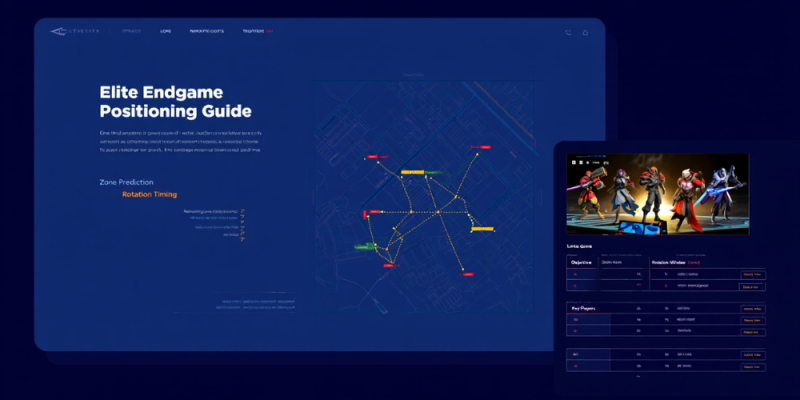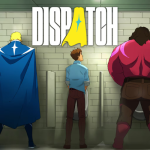Fortnite Pro Playbook: The Ultimate Advanced Guide

This is a pro‑level Fortnite guide designed to sharpen your mechanics, decisions, and consistency in both Build and Zero Build. We focus on the details that swing tournaments: input latency, edit discipline, surge planning, rotation timing, layer swaps, IGL calls, and endgame refresh choices. The language stays clear and direct, but the content assumes you already understand the basics and want to convert good lobbies into steady top‑finishes.
Your goal as a pro is simple: lower variance. You do that by removing guesswork. Standardize settings, land the same split, hit reliable surge plans, rotate with intention, and run a practice loop that exposes weak spots. The next pages compress that into actions you can apply in scrims and on tournament day.
Pro Setup: Latency, Controls, and Clarity
Reduce input and visual latency before touching mechanics. On PC, run a stable frame cap a little under your achievable average, and enable a low‑latency mode in your GPU panel. Keep textures clear enough to read silhouettes, but cut heavy effects and shadows that spike frame time. Disable overlays and background apps that cause hitching. On console, pick Performance mode and turn on a low‑lag profile on your TV or monitor. For all platforms, “Visualize Sound Effects” is useful if your audio mix is noisy, but keep HUD elements small and readable so they do not hide targets.
Controls must be consistent. Mouse players should sit at low‑to‑medium sens that allows a comfortable 180° without large arm strain. Controller players should stabilize deadzones to stop drift and pick a response curve they can track with under pressure. In Build, bind separate keys for edit, confirm, and reset; turn on Confirm Edit on Release only if your muscle memory stays clean at full speed. Use Preferred Item Slots so shotgun, AR/SMG, heals, and utility always land in the same places. Consistency here removes panic and speeds every mid‑fight decision.
Off‑Spawn: Splits, Timing, and Isolation
Pick one primary POI split and one backup. Know every chest, floor loot, ammo box, cooler, and vehicle. The off‑spawn win condition is isolation: fight one opponent at a time with better timing and angles. If your drop collides, land on the highest‑value first pick (weapon with ammo source, instant shield) and force the first duel before they can stabilize. If you are late or outnumbered, deny line of sight, change elevation, and reset to a pocket you have already mapped. A controlled disengage is not weakness; it is a setup for a clean re‑entry with health and information.
Do not over‑harvest early. Gather enough mats for one extended fight and a rotate, then leave before third parties accumulate. If the lobby is stacked, build a fast off‑spawn surge plan: safe tags from rooftops, a power peek over a ridge, or a pre‑scouted gate where rotators cross. The goal is to exit with shields, mobility, and a basic loadout without losing resources to coin‑flip trades.
Loadout Theory and Upgrade Discipline
Carry a kit that matches the lobby and the plan. In Build, shotgun plus fast swap (SMG or AR) with two heals and mobility gives you box‑to‑endgame coverage. In Zero Build, mid‑range beam plus close‑range finisher and strong movement tools rule. Rarity matters, but only when safe and cheap. Never upgrade if it delays a rotate into bad zones. Carry ammo for the weapons you actually fire; if light ammo is low, don’t anchor on an SMG. Keep at least one stack of fast shields for reset windows and one stack of heals tuned to the current circle tick.
Inventory order should never change. After every fight, reload, top off, and put items back into their expected slots. That alone removes the fumbling that breaks endgames. If you pick up a niche item, define its job immediately—entry tool, escape, or denial—and dump it the moment it no longer serves the plan.
Micro: Piece Control, Peeks, and Damage Trading
Mechanics are about safe damage. Use right‑hand peeks to show less of your model while seeing more of theirs. Build a clean box (walls, floor, cone) and edit small, readable openings. If you take wall control, place a cone inside their box before the edit to block moves and force bad trades. Practice pre‑edit theory sparingly; flashy chains are worthless if they cost clarity. Prefire when the opponent’s edit pattern is predictable, and cancel if they bait. Your best shot is the one they cannot see coming—change height by one tile, shift half a box to the side, or drop a layer and peek from a new angle.
In close fights, shotgun into instant swap wins more often than multi‑pump fantasies. At medium range, counter‑strafe to tighten bloom and burst to keep accuracy. Always track resources: your health, their health, your mats, their panic. If you crack shields, convert quickly before they stabilize. If you get cracked, stop ego peeking; layer up, break vision, and reset with heals or mobility. You are trading time for safety—do it on purpose.
Zero Build: Terrain, Timing, and Route Control
Without builds, the map is your kit. Play power positions that give sight, cover, and an exit. Before taking a fight, ask: where do I play if I get beamed? Start engagements with chip damage from mid‑range so you enter pushes with a health lead. Use elevation to deny enemy head‑glitches, and move in short bursts from cover to cover. Vehicles are tools, not homes; break line‑of‑sight with them and abandon before circles tighten. Utility decides games here—smokes or deployable cover for crossing, grenades to flush, and mobility to steal ground at the right moment.
Your macro must be quiet and quick. You win by moving earlier than average and holding angles that punish late rotators. If you are late, wrap wide on low‑traffic lines rather than sprinting the obvious route. Commit only when the elimination secures space or resources; anything else risks a third party collapsing the fight.
Midgame: Rotations, Timing Windows, and Surge
Plan two circles ahead. Read elevation, water, chokes, and dead‑side lines that avoid stacked trios of teams. Move early when high ground is about to gate the lobby; move late only if you can hug terrain safely with mobility on deck. Keep mental timing windows: heal and reload after each rotate, tag rotators safely for surge, and never sit in the open while re‑planning. If you are below surge thresholds in competitive lobbies, execute pre‑planned tags from safe positions, then disengage. Surge is math, not panic—track it and stop bleeding resources when you are healthy on damage.
In Build, avoid burning mats on flat, exposed paths. Chain short tarps between natural cover, claim low congestion layers, and deny entries with quick cones and walls. In Zero Build, choose the quieter edge or an anchored center with multiple exits. Midgame is about space, vision, and future options; every rotate should increase at least two of those three.
Endgame: Layering, Refresh, and Win Conditions
Endgames are controlled by layer choice and refresh discipline. Front side of zone offers safety; back side offers tags. Pick your job based on resources. If you hold height, maintain it with minimal mats, watch for doubles (two teams pressuring you), and drop for refresh only when you have a safe, marked target. If you play mid or low, ride front edge, look for scuffed players crossing your line, and convert one elimination into mats, heals, and movement. That is your refresh; protect it and reset immediately.
Rotate in short segments. Move early, claim a box or cover slice, heal, then look for controlled damage. Do not tunnel vision on finishes; a confirmed down is worthless if it costs your position. In the final pulls, count heal potential. If you cannot win the duel clean, set up a brief heal‑off while cutting off the opponent’s line. Your win condition is either numbers advantage, height with control, a final swing on a weak opponent, or a safe heal finish. Decide which one you have and play to it.
Team Play: IGL, Roles, and Comms
Define roles clearly. The IGL calls routes, timing, and layer changes. The fragger looks for safe openings and refreshes. The support tracks mats, heals, and drops utility on command. Keep comms short: location, status, intention. “Cracked, 60 white, front left box.” “Low on mats, dropping two stacks.” “Move now, right ramp, up one layer.” Stack moves together. If someone gets desynced, pause and re‑link on the nearest safe tile. Between zones, redistribute resources so the IGL never calls a rotate while broke on mats or without mobility.
Review call quality. Good IGLs set expectations early: we are playing front side this zone; we are holding height next pull; we swap layers if triple sprayed. This reduces panic when chaos hits. Off‑spawn, agree on risks you will take and the exact moment you will leave. Consistency in comms builds trust and speeds choices when it matters most.
VOD Review and Practice Blocks
Aim warmups should be targeted: five minutes of smooth tracking, five of micro‑adjust flicks, and five of stress drills that raise heart rate. Mechanics blocks should repeat clean edits under speed—corner edits, ramp flips, floor plus cone replaces—without flashy detours. Scrims train macro; customs train movement under pressure; arena polishes DM. Keep each block focused and end with three live games applying one theme like “early rotate,” “front‑side discipline,” or “refresh timing.”
VOD with questions, not feelings. Why did the run end? Wrong layer, bad peek, late rotate, surge debt, or inventory mistake. What was the better option available at that moment? Where was the nearest safe tile? Write a one‑line fix and drill it the next day. Track simple metrics over time: percent of games reaching moving zones, mats at first moving, average surge at second zone, and convert rate on refresh attempts. Improvement shows up there before it shows on placement sheets.
Tournament Day: Routine, Nerves, and Recovery
Have a fixed routine two hours before start: light aim, simple edit drills, one warm scrim, and a short break. Eat and hydrate; keep caffeine moderate. Enter the playlist 60–90 seconds after unlock to dodge early server spikes. Between games, take two minutes to breathe and write a single focus for the next match, then reset. If a game goes bad, stop the spiral fast—mute the VOD, identify one concrete error, and commit to the fix rather than venting. Your mental reset is a skill like any other.
Tech checks save tournaments. Restart the client after patches, verify drivers, and keep temps under control. If you feel input lag creep in, drop one visual setting tier and hard‑cap FPS. On consoles, switch to a wired connection; on PC, prefer Ethernet and close any bandwidth hogs. You cannot out‑aim stutter.
Conclusion
Pro Fortnite is a system: stable settings, rehearsed splits, clean mechanics, controlled surge, intentional rotations, sharp refreshes, and disciplined comms. Remove randomness by choosing the same good behaviors every game. You do not need miracle plays; you need fewer mistakes and faster resets. Build your day around short focused practice, honest VOD, and simple match goals. Do this, and your placements will climb, your nerves will calm, and your best games will become your normal games.
- Standardize your drop, surge plan, and rotate timings; then iterate, not reinvent.
- Peek with intention, trade safely, and reset the instant you lose shield control.
- In endgame, choose a job—height, front‑side mid, or low refresh—and commit.
- Keep comms brief and useful; redistribute resources after every fight.
- VOD ends with a one‑line fix you drill the next day. That is how pros get consistent.
















